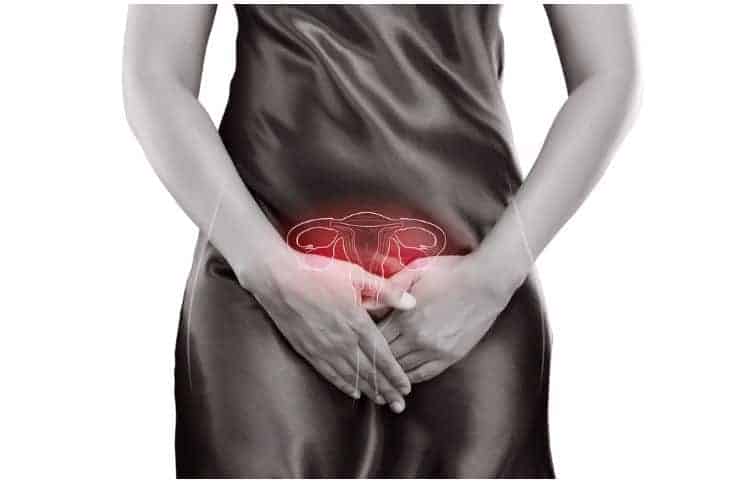Urinary Tract Infection (UTI)
A urinary tract infection is an infection in any part of the urinary system – ureters, kidneys, urethra, and bladder.
According to the National Institute of Diabetes and Digestive and Kidney Diseases, UTIs are the 2nd most frequent infections with women being much more likely to contract one (1 in 5 women experiences a urinary tract infection at some point during her life).
It is extremely uncommon in young males, hence, it can come as a nasty surprise when men get one for the 1st time in their 50s, typically due to an enlarged prostate.
Women get UTIs much more often than men because women have a shorter urethra, which may make it easier for pathogenic bacteria to reach the bladder. Plus, a woman’s urethra is closer to the anus, allowing those nasty bacteria to reach the urethra without going far.
Furthermore, a woman’s risk of having recurrent urinary tract infections increases with each infection. Also, individuals who get repeated urinary tract infections may require additional tests to check for other health conditions.
Symptoms
Symptoms of a urinary tract infection in adults may include:
- urinary incontinence;
- changes in the color of the urine;
- pelvic pain in women,
- pain when urinating;
- strong-smelling pee;
- a burning sensation in the urethra or bladder when urinating;
- a frequent urge to urinate, but only passing small amounts;
- frequent urination;
- muscle aches;
- weakness;
- feeling tired;
- abdominal pain.
Causes
It may be caused by one or more of the following conditions:
- waiting too long to urinate;
- in young sexually active women, sexual activity is the main cause of bladder infections;
- multiple sex partners;
- a new sex partner;
- more frequent intercourse;
- a history of urinary tract infections, mainly if the infections were less than 6 months apart;
- use of contraceptives, like – spermicides and diaphragms;
- a history of sickle-cell anemia, diabetes, kidney stones, and stroke;
- use of products, like – harsh skin cleansers;
- pregnancy.
Treatment
If this type of infection is not treated correctly, the pathogenic bacteria can travel up to the kidneys and cause pyelonephritis, a more serious type of infection. Symptoms typically include flank tenderness and fever.
Allopathic treatments for UTIs may include antibiotics. Also, increasing water intake by 2 glasses a day may help reduce the infection.
Methenamine hippurate is an alternative treatment for patients who cannot have antibiotics. Moreover, some studies concluded that several active compounds in cranberry juice lowered pathogenic bacteria count in the bladder, therefore, many individuals consume cranberry juice during a urinary tract infection.
Foods high in vitamin C (guava, bell pepper, kiwifruit, black currants, papayas, oranges, mandarines, cherries, or strawberries) are also used to combat these symptoms because vitamin C helps inhibit E. coli growth as well as it may reduce the chances of developing recurrent urinary tract infections.
Chlamydia
According to the annual Sexually Transmitted Disease, it is among the most prevalent of all sexually transmitted infections. For instance, in 2016, a total of 1,598,354 chlamydial infections were reported to the Center for Disease Control and Prevention with more than 50 percent of these diagnoses were young women.
This type of infection can lead to future infertility, plus, it can increase the chance of ectopic pregnancy and can cause permanent damage to the fallopian tubes (an essential component of the normal reproductive process) in a woman.
If infected vaginal fluid or semen comes into contact with the eye (for instance if it is transferred from the genitals to the eye by the fingers) it can cause infection of the eye (conjunctivitis).
Additionally, it can infect the rectum. While these infections frequently cause no symptoms, an infected individual may experience rectal discharge, pain, or bleeding. In addition, this bacterium can be found in the throats of men and women having oral sex with an infected partner, and it is frequently asymptomatic.
If you are under 25 years old and sexually active, it is recommended that you should get tested for this infection every time you have a new partner or every year.
Symptoms
Common symptoms include:
- dyspareunia (painful sexual intercourse in women);
- pain in the testicles;
- pain in the lower abdomen;
- green or yellow discharge from the vagina or penis;
- burning sensation during urination.
Note – only approximately 30 percent of females with this type of infection have any signs and symptoms. However, if symptoms occur, they typically start to occur within 20 days of infection.
Causes
This infection is caused by the bacterium called – Chlamydia trachomatis. This bacterium is spread through anal, vaginal, or oral sex with an infected partner. If left untreated, this infection can make it difficult for a woman to get pregnant.
You have an increased risk to get it if you have multiple partners or if you don’t regularly use a condom.
Note – this infection is not transmitted through casual contact, so you can’t get it from sharing food or kissing, drinks, holding hands, hugging, sneezing, coughing, or sitting on the toilet.
Treatment
It is generally treated with antibiotics. You may be given a longer course of capsules to take for 7 days or some tablets to take all in one day.
UTI vs Chlamydia – Differences
Chlamydia is a sexually transmitted infection that can be taken from an infected sexual partner. On the other hand, a urinary tract infection is caused by a weakened immune function and affects only the urinary system.
Images credit – Shutterstock
READ THIS NEXT: Clotrimazole vs Miconazole
References https://www.ncbi.nlm.nih.gov/pmc/articles/PMC3784967/ http://uti.stanford.edu/research/obstructive-urosepsis.html
